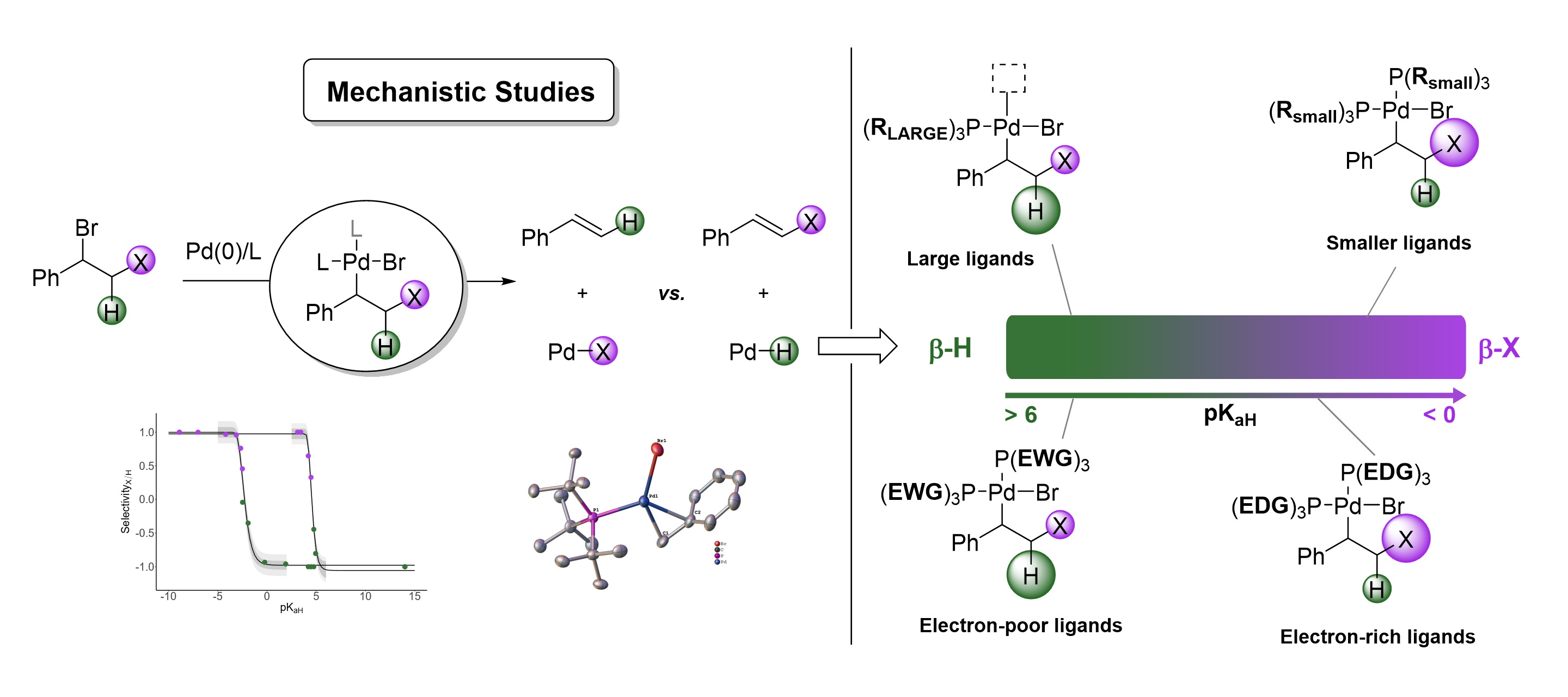β-X vs. β-H Elimination. Selection Rules for Chemoselectivity Enabled by Mechanistic Studies‡
As transition metal chemistry advances, catalytic reactions will tackle more difficult transformations. Reactions involving alkyl-transition-metal species are particularly challenging, given the high reactivity of these species.1 Many existing reactions employ such intermediates e.g. alkene hydrofunctionalisations, Mizoroki–Heck cross-coupling, alkyl C–H activation, alkene polymerisation and C(sp3)- C(sp3) coupling.2 For these compounds, β-elimination - of either a hydride (β-Η) or a heteroatom (β-Χ) - is the most common reaction pathway. These pathways can either lead to the desired reaction cf. Mizoroki–Heck, or they can hinder reaction progress cf. ethylene/vinyl halide co-polymerisations.3 Despite the importance of these elimination processes, little mechanistic understanding exists with respect to the factors that control the competition between them.4
We describe a systematic mechanistic investigation of the competition between β-Η and β-Χ using alkylpalladium complexes as a model system. The derivation of selection rules for achieving selectivity towards either elimination, as well as the development a predictive mechanistic mathematical model is presented. Finally, we outline how the ideas derived from this research could apply more generally to studying competing reactions and extending this work to other metals.
‡Preprint: 10.26434/chemrxiv-2022-50fd0, Accepted: Nature Synthesis, May 2022

[2] Hartwig, J. F. Organotransition Metal Chemistry: From Bonding to Catalysis, 2010.
[3] S. Wada, R. F. Jordan, Angewandte Chemie - International Edition, 2017, 56, 1820–1824.
[4] Z. Zhang, , X. Lu, Z. Xu, Q. Zhang, X. Han, Organometallics, 2001, 20, 3724–3728.